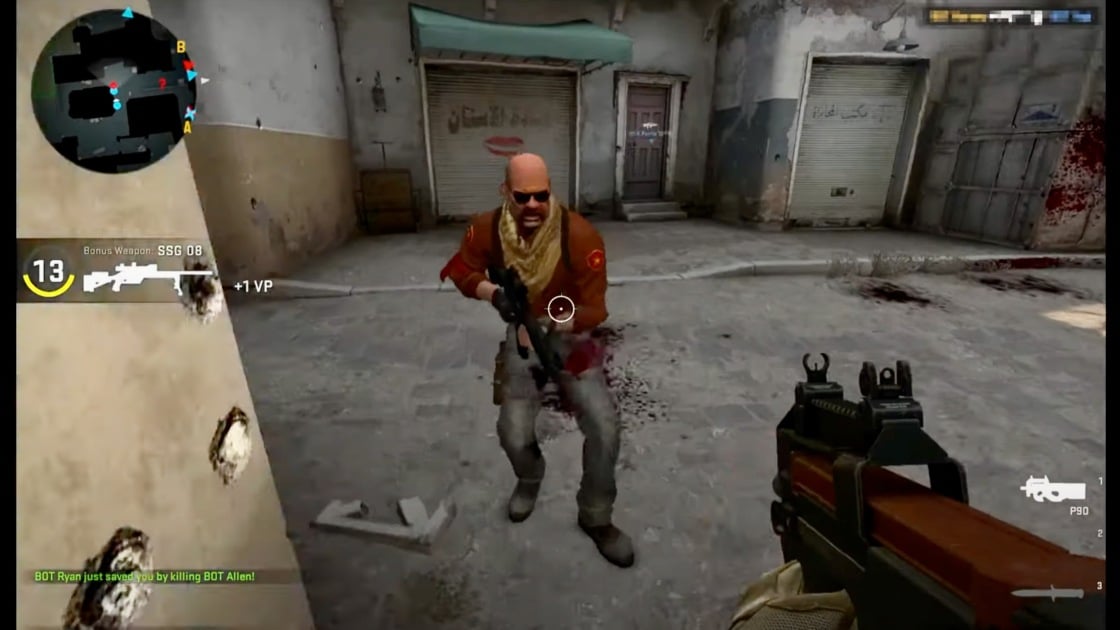
The second human to receive a brain chip from Neuralink is already using the implant to play the PC shooter Counter-Strike 2. On Wednesday, Elon Musk’s Neuralink gave a status update on “Alex,” a man who lost control of his limbs after a spinal cord injury. He got the brain chip last month, and since then, he’s been using the implant to remotely control a mouse on, his laptop. Like the first Neuralink patient, Noland Arbaugh, Alex has also been using the brain chip to play his favorite computer games, such as Counter-Strike 2. Before, Alex had to use a mouth-operated controller, called a QuadStick, to play the first-person shooter. But even then, the controller limited him to only moving or aiming his weapon at a single time, never simultaneously like a normal Counter-Strike player. In other words, Alex had to essentially switch back and forth between the mouse and keyboard functions while playing the game. But thanks to Neuralink, he can now aim with the implant, and simultaneously move while using the QuadStick. “Just running around is so enjoyable because I can look side to side, and not need to move Quadstick left and right,” Alex told Neuralink in a blog post. “I can [think about where to] look and it goes where I want it to. It’s insane.”
The company has uploaded a video showing Alex using the implant to play the game. It shows him gunning down a bot enemy and then firing at another from afar, all with relative ease. Along with games, Alex has also been using the implant to develop 3D designs in CAD software. This has included creating a custom mount to hold the electric charger for his Neuralink implant. The mount was then 3D-printed.
In the blog post, Neuralink also addressed a problem the company faced when placing the chip in Arbaugh, the first patient. Despite a successful surgery, about 85% of the thread-based electrodes attached to his brain later became displaced, undermining the full potential of the chip to read neural signals.Although Arbaugh can still use his implant effectively, Neuralink wanted to avoid a repeat with Alex. In response, the company developed several “mitigations,” which include reducing the chance of an air pocket forming during surgery and placing the implant deeper into the brain tissue.
Recommended by Our Editors
“Promisingly, we have observed no thread retraction in our second participant,” the company said of Alex. Whether Alex’s implant outperforms the brain chip in Arbaugh was left unclear. In the meantime, Neuralink says it’s working on ways to enhance the controls on the technology “to deliver full mouse and video game controller functionality.”“Additionally, we plan to enable the Link [brain chip] to interact with the physical world, allowing users to feed themselves and move more independently by controlling a robotic arm or their wheelchair,” the company said.
Get Our Best Stories!
Sign up for What’s New Now to get our top stories delivered to your inbox every morning.
This newsletter may contain advertising, deals, or affiliate links. Subscribing to a newsletter indicates your consent to our Terms of Use and Privacy Policy. You may unsubscribe from the newsletters at any time.
About Michael Kan
Senior Reporter
I’ve been with PCMag since October 2017, covering a wide range of topics, including consumer electronics, cybersecurity, social media, networking, and gaming. Prior to working at PCMag, I was a foreign correspondent in Beijing for over five years, covering the tech scene in Asia.
Read Michael’s full bio
Read the latest from Michael Kan






